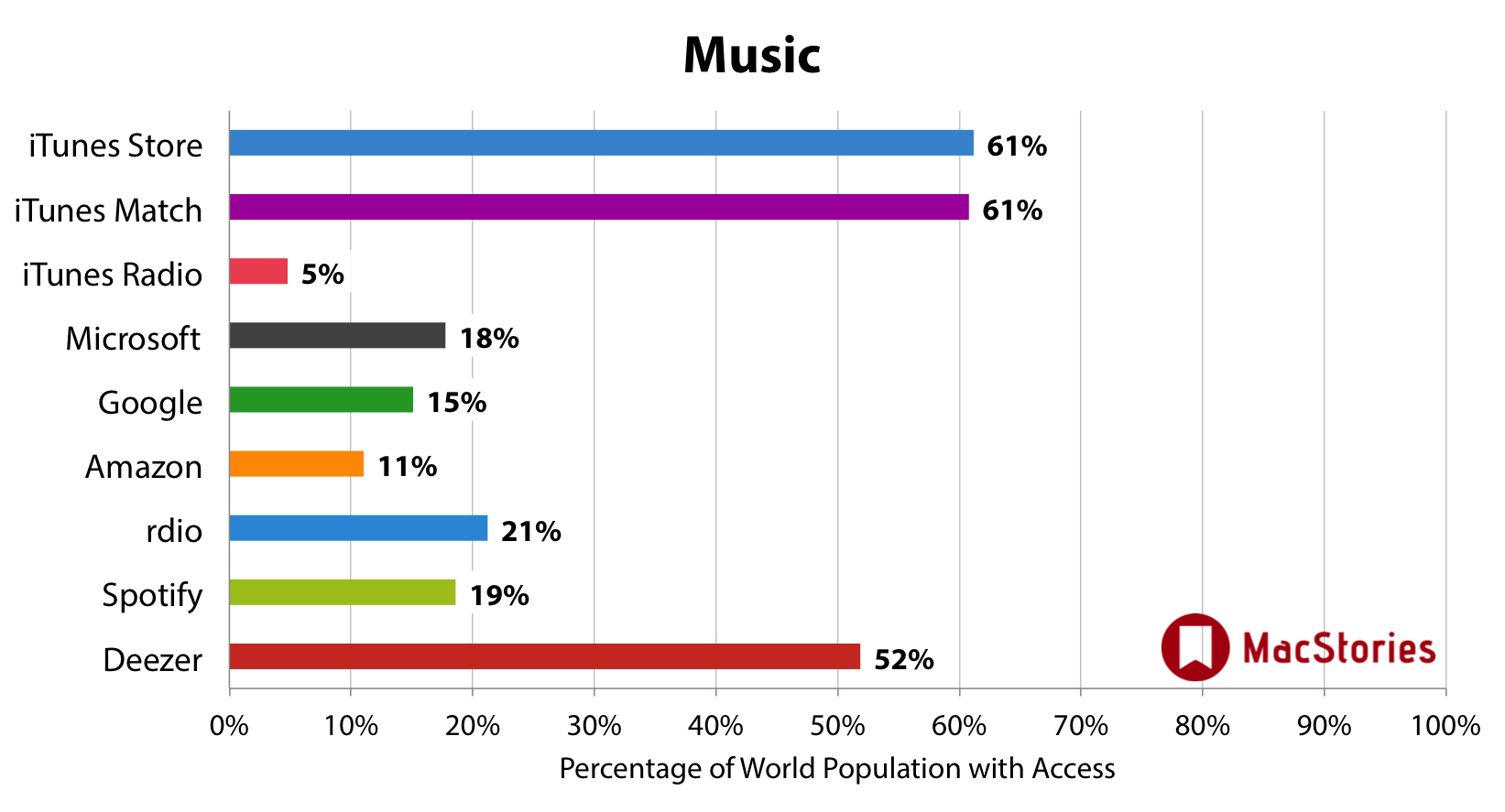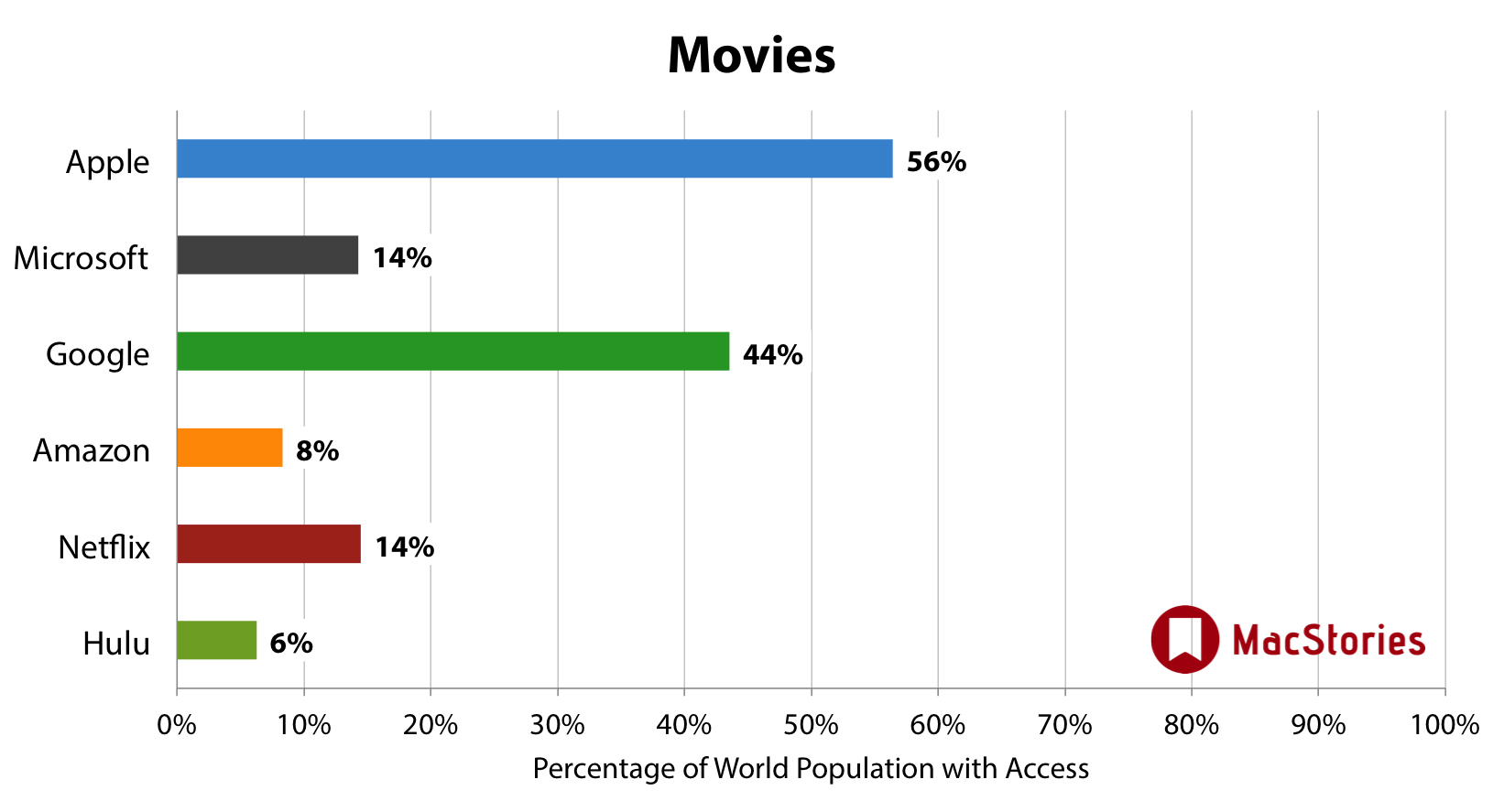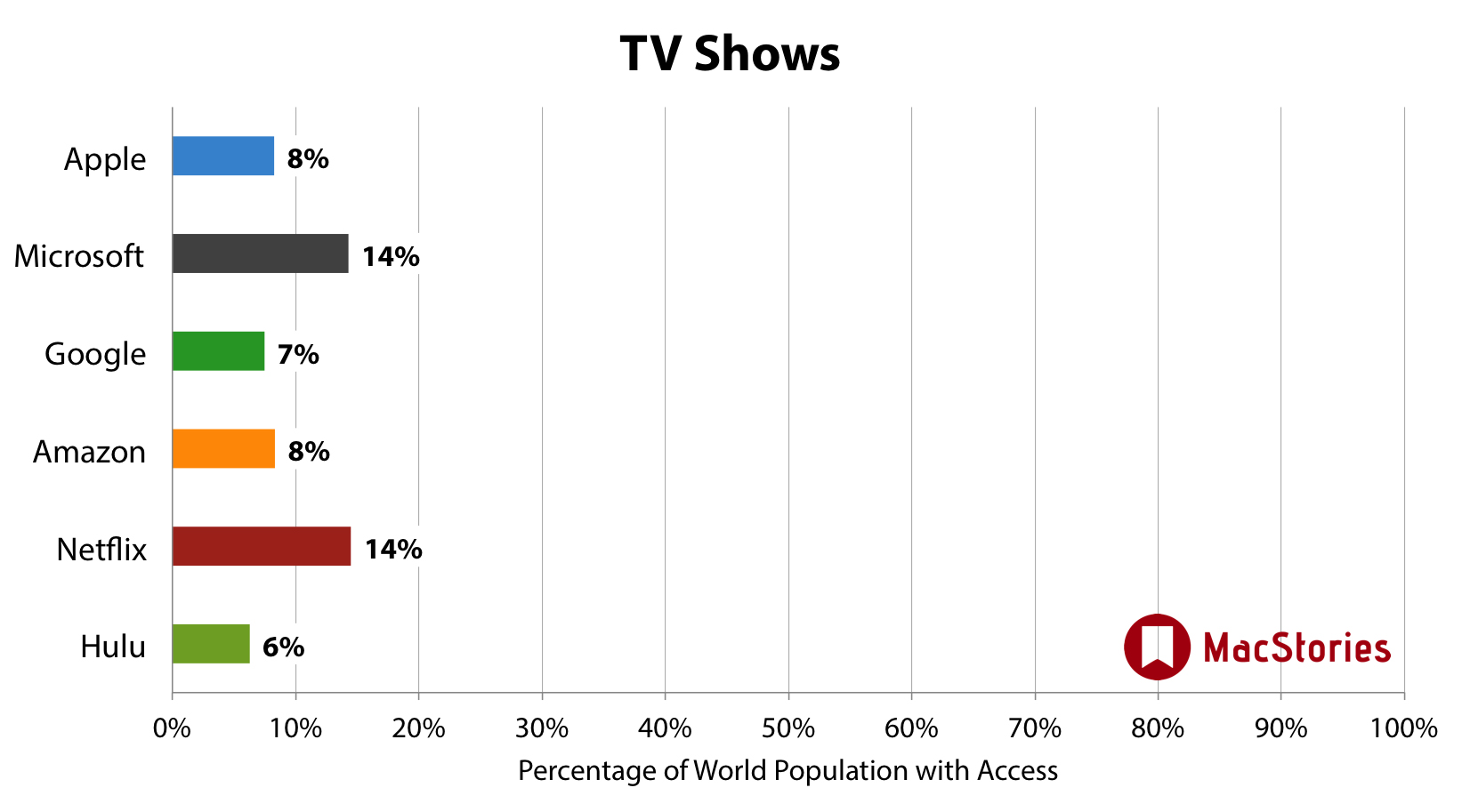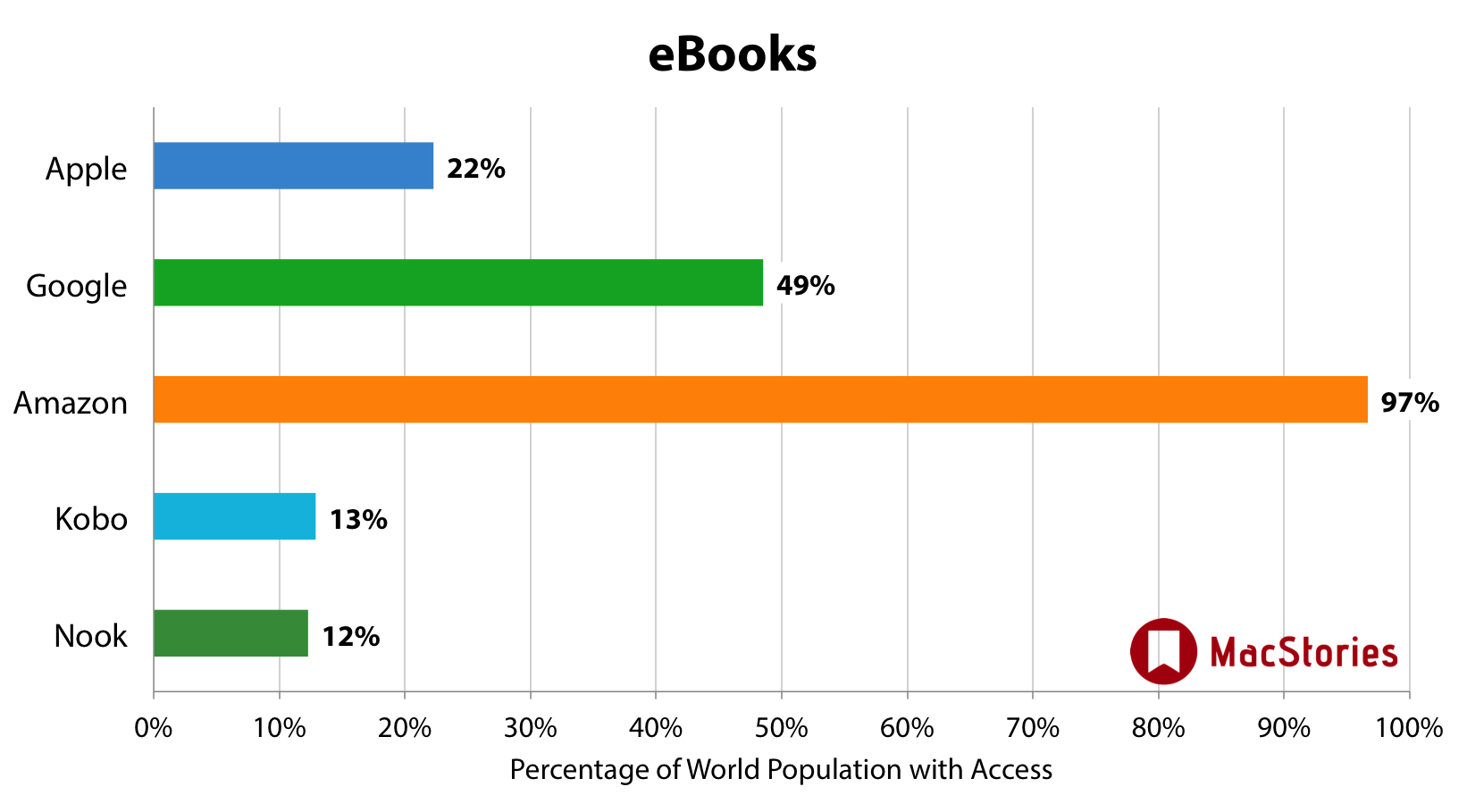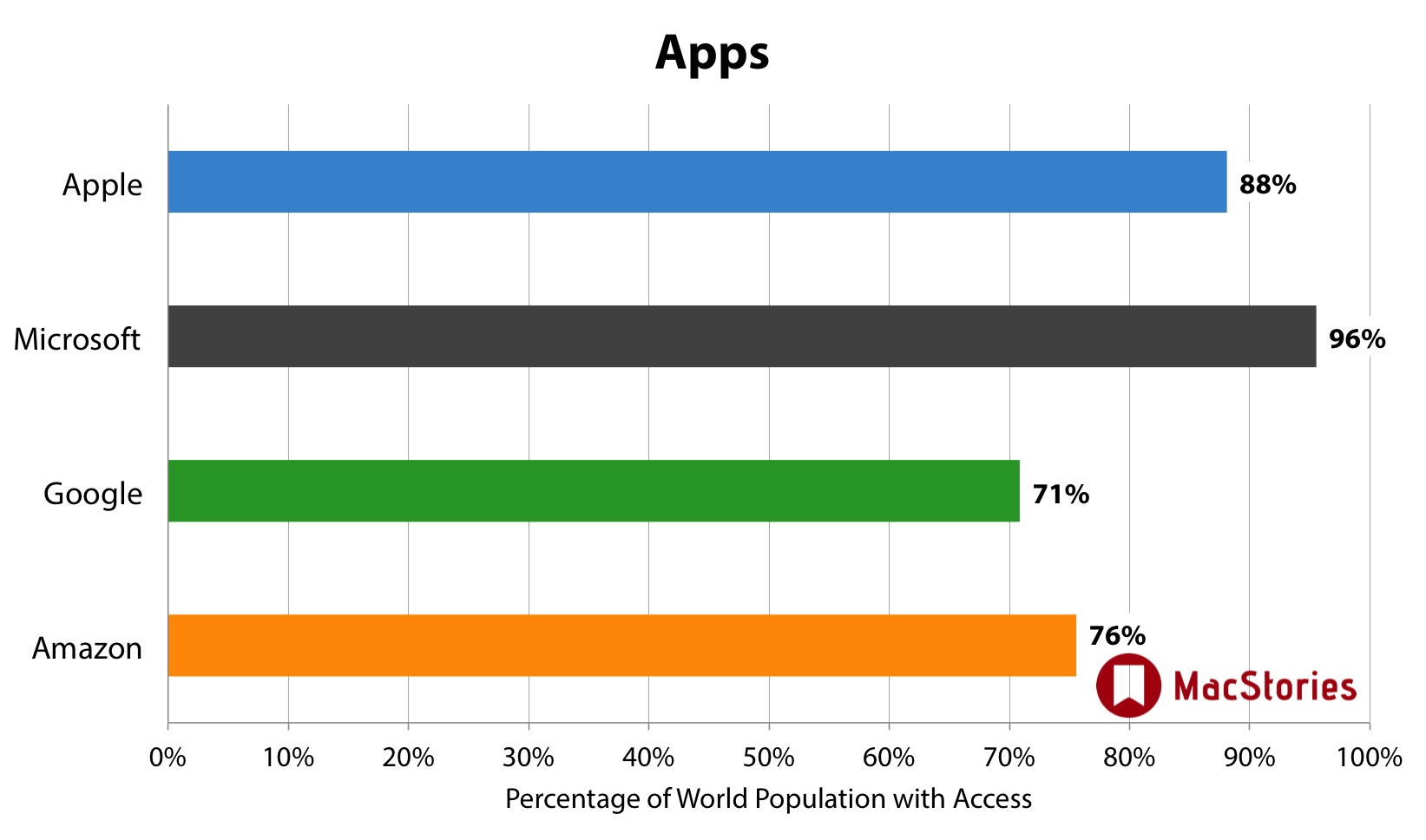It is 2014 and we live in a rapidly globalizing world. Unfortunately, that is not always apparent from the technology press, which focuses primarily on developments in the US. That is not meant as a slight against others who write about technology – it is just the reality. But thanks to our global and interconnected world, companies increasingly need to be able to do well in more than just one geographical market to succeed and grow. Additionally, customers outside the US are more aware than ever (thanks to the Internet and technology press) of new products available in the US and will place loyalty in the companies that bring those products to their country too.
It was this train of thought that led me to write a trilogy of so-called ‘Mapping’ posts in 2012 which covered three main topics: the availability of entertainment services across the world, the expansion of Apple Stores internationally and the rollout of various iPhones and iPads after their US launch. All are still available to be viewed, but as significant time has passed, please bear in mind that they are no longer current.
Today I am back to revisit the topic of entertainment services. The purpose, as was the case last time, is to see the international availability of entertainment services from Apple, Google, Microsoft and Amazon. Not only have we updated the information on all of these, but we have also added data about the availability of Rdio, Spotify, Deezer, Netflix, Hulu, Kobo, and Nook. Hopefully, with the aid of new maps and graphs included, you will get a better picture of how these entertainment services fare in catering to today’s global market of consumers.
Technical notes on the interactive content
This article is a bit different to most others we run on MacStories as it includes interactive graphs and maps. Most importantly, if you are reading this from an RSS reader or read-it-later service such as Pocket or Instapaper, we would suggest you read this article in a web browser as those interactive elements form a big part of this article and will unfortunately not be visible in those services. If you are on an iPhone or iPad, don’t worry, we have made sure they work and look perfectly fine on those devices as well.
When you come across the interactive maps, there are a few things to be aware of. Firstly, they are interactive in the sense that you can zoom in (pinch to zoom on iOS, buttons in the top-left for Macs/PCs) and take the map full screen (button in the top-right corner). In order to compare the worldwide availability of various services, you simply need to click or tap on the service names that are listed directly below the map and the map will update with relevant countries shaded to indicate availability.
Music

Apple has a huge lead over almost everyone
This situation remains virtually identical to what it was when I last talked about it:
“Given that Apple’s iTunes Music Store was opened in April 2003, long before the other three began their music stores, it should be unsurprising to find that the iTunes Music Store has the widest reach. What did surprise me was how huge the difference was between Apple and the other three. I don’t think it would be an overstatement to say that Apple destroys them in this regard.”
But it should also be noted that each of the big four have expanded considerably since late 2012, with the exception of Amazon (which remains static). Apple went from 27% to 61%, Microsoft went from 10% to 18%, and Google went from 5% to 15%.
iTunes Match has rapidly expanded globally, iTunes Radio not so much
iTunes Match officially launched in the US in November 2011, but after a slow start, it has quickly become available in virtually every country that also has access to the iTunes Store. By contrast, iTunes Radio is only available in the US and Australia.
In fairness, iTunes Radio only launched in September last year, so it may still be a little early to tell definitively, but it does appear to be taking Apple a lot longer to expand iTunes Radio globally. It is impossible to say exactly why this is the case, but an obvious explanation for this is that there are far more complex negotiations involved in launching iTunes Radio (as well as bringing iAd to new countries for the free version of the service). Consequently, I’d expect iTunes Radio to continue to be far slower than iTunes Match in expanding globally.
The new streaming services outflank Google, Microsoft, and Amazon
One of the most surprising revelations of this research was realising that Rdio, Spotify, and Deezer are available to more parts of the world than music offerings from Google, Microsoft, and Amazon. It is particularly impressive when reflecting on the fact that not only are these far smaller companies when compared to Google, Microsoft, and Amazon, but that the service they offer is arguably a more difficult one to negotiate – as was discussed above with iTunes Radio. Deezer in particular is available to a very impressive 52% of the world’s population, but notably it is not available to those in the US as of yet. Beats Music was not included given that it is a very new service and only available in the US at the moment.
Movies

Google is better at movies than they are at music
Google is quickly catching up to Apple with 44% of the world’s population now having access to the Play Store for movies. But interestingly, they are the only one of the four big technology companies that have done better in bringing movies to the world’s population than they have with music. It’s also quite a striking difference, with movies at 44% but music only at 15% for Google. Lastly, Google has impressively jumped to that 44% percent mark up from just 11% when I last talked about this in late 2012 – although almost as impressive is Apple’s jump from 27% to today’s 56%. Microsoft has remained at a stagnant 14%.
Netflix geographical focus
Netflix has taken an interesting, and somewhat unique approach as they have expanded internationally. Generally, it would be common to expand to the UK and other wealthy and developed nations, such as those that are a part of the OECD group. But Netflix appears to have taken an approach of saturating both the North American and South American continents first, including countries that would normally get access far later in the international rollout of a particular service.
Netflix Availability by Region (percentage of world population)
North America (50%) - South America (39%) - Europe (11%)
Television

A woeful showing by all
Without question, out of all the digital entertainment types discussed here, TV is the least accessible on a global perspective.
Microsoft and Netflix lead the way with 14%; compare that to Music where the best service is available to 61%. Similarly, see Movies (56%), eBooks (97%), or Apps (96%). The below graph highlights the averages of all these entertainment services and it also makes it clear that TV is woefully unavailable internationally.
Average Availability of Entertainment Services by Type (percentage of world population)
Around the time of my previous article in 2012 there were a lot of rumours swirling about a possible breakthrough Apple TV. Those rumours continue today. So let me just repeat what I said then, as it unsurprisingly holds true today.
The iTunes TV Store isn’t a new thing either – it was launched in 2005, a year before the iTunes Movie Store and yet it has far less international coverage. It may well be that their TV store isn’t a very profitable venture compared to the Movie and Music stores, but the fact they have been this slow (in only achieving coverage in six countries) leads me to believe that there may be other factors for the slow progress. In fact, given such little progress has been made in seven years, I’m inclined to believe that it is the US TV and cable networks that have been unwilling to embrace the new digital stores that the music and movie industry have slowly but surely got behind. Is it any wonder, given Apple, Microsoft, Google and Amazon’s struggle with making TV stores available internationally, that there have been numerous reports this year of Apple struggling to just hold negotiations together over a new “real” Apple TV?
These statistics may actually exaggerate the availability of TV content
Something to keep in mind for all of the entertainment categories discussed in this article is particularly true for TV services. Just because Apple offers TV shows on the iTunes Store in Australia and the United States does not mean that the actual content offered is identical or even close to comparable. In fact, it is far from identical: the Australian Store (as an example) has a limited selection by comparison and when content is available in both regions, it is often after a lengthy delay for the Australian Store (often waiting on the Australian DVD release date). This applies to all the services, not just Apple.
These services are not equal
It should also be remembered that Netflix is not the same as Hulu and neither of those are the same as the iTunes TV Store. Some of the services are catch-up ones (Hulu and iTunes for example, but they work in different ways financially), whilst others offer back catalog content (iTunes, Netflix, and even Hulu to an extent) and others offer original content (Netflix, Amazon, and soon Microsoft).
eBooks

Amazon absolutely dominates
There isn’t much to say, other than the fact that the Kindle store is available to 97% of the world’s population – that is impressive on any scale. Out of every service and store covered in this article, the Kindle Store is the most available.
Microsoft, missing in action
Microsoft doesn’t have their own eBook store, which is a notable omission. But they have invested $605 million dollars into Barnes & Noble’s Nook business and there have been rumors of Microsoft acquiring the Nook business. In the meantime, Nook trails the rest of the eBook stores with just 12% of the world’s population covered, but Kobo isn’t far ahead at 13%.
Apps

Apps are in a world of their own
Apps are vastly different to all the other forms of entertainment that are discussed above. You can measure the lifetime of books and music in centuries, movies and TV in decades, but by comparison the history of smartphone and tablet apps can be measured in years.
This comparatively recent entertainment form has also proved to be the easiest for the technology giants to bring to people across the world. The reason for this can, in my opinion, be traced back to the fact that unlike in the other forms of entertainment, there are no big and well-established companies that control significant amounts of content. So whilst the technology companies named above simply have no choice but to negotiate with the large movie studios and music labels to convince them to bring content to their movie and music stores, the same is not the case for apps.
For the various app stores there are no big publishers that Apple or the others had to negotiate with in setting up their app stores: they just set the rules and opened the floodgates of developers to come to them. Case in point: not even Microsoft was able to negotiate with Apple over their 30% when bringing Office to the iPad.
But here is an interesting theoretical question: could it be the case that in the years or decades to come, the field of apps could also concentrate into a few large app-publishing companies that command huge power, just like we can see in the other entertainment categories? One might argue Facebook (with Instagram, Moves, WhatsApp, etc) is making the early moves that might prove such a scenario true.
Third in the smartphone race, Microsoft is first in one aspect
In my previous article, one of the biggest surprises was that Microsoft’s Windows Phone Store was available to the greatest percentage of the world’s population, slightly edging out Apple with 91% (compared to Apple’s 88%). This has remained true today, with Microsoft extending that lead to a very impressive 96%, whilst Apple remains at 88% (a closer look at the numbers revealed that Apple has made some progress but not enough to shift the round number percentage).
China has 19% of the world’s population
[Correction: The original version of this article stated that Amazon’s app store was not available in China (in the text and graphics). This was incorrect and has now been rectified, thanks @mudkip_me for alerting us to the error.]
Google is trailing in last place at 71%, with even Amazon slightly ahead (currently at 76%). But it is important to note one very crucial difference between Google and the other three. The latter three have their app store available in China, but Google does not. With over 1.3 billion people, China contains 19% of the world’s population. To put it very simply, if Google expanded their Play Store for apps to just China, they would surpass Amazon and Apple and jump to 90% coverage.
A brief chat with the Rdio team
In preparing this article, I reached out to the Rdio team and they were kind enough to respond to a few of my quick questions. Their answers really highlight how different the app stores are to the other entertainment services. When I asked them about the process of bringing Rdio to a new country, they said it is important that they are “not just turning the lights on but ensuring that we have a global catalogue along with a local content catalogue”. I suspect the other companies would share the sentiment of Rdio. But it is an interesting contrast to then look at the app stores, where the big four have been able to largely just turn the light on (so to speak) and then move on to the next country.
The Rdio team noted that global expansion was a key focus for them, and they try to achieve this goal by forging partnerships with companies such as Cumulus, Dhingana and Grupo Bandeirantes that can assist them in various ways. But although those partnerships certainly might help, there are still a number of challenges in licensing music in the way that Rdio wants to do internationally, as they briefly highlight:
Although the world of music is increasingly becoming digital, licensing music from both labels and publishers around the world is still a difficult task and in many cases operating under laws and rules that are decades old which can cause some disparities with music offered in different regions. We are working diligently everyday with the labels and artists to provide a seamless service to all of our customers so no matter where they are at they will have access to all the music they want.
Sources
Music
Movies and TV
eBooks
Apps
Credits
Thank you very much to Bradley Chambers for help with sourcing country availability for the Kindle Store and Aaron Mahnke for the Kobo and Nook stores.
Much credit should also go to Alessandro Vendruscolo and Federico Viticci for implementing Polymaps and Chart.js on MacStories. These technologies have allowed my research and data to become the fantastic interactive visual graphics you see above.



